-
Posts
1,620 -
Joined
-
Last visited
Content Type
News Articles
Tutorials
Forums
Downloads
Everything posted by mrwonko
-

Possible to have multiple opening crawl files? In OpenJKA
mrwonko replied to RebornKyle's topic in Modding Assistance
The way I remember it, the title crawl comes from a single image file, which is hardcoded, and it only plays before one specific level. So there's no way to combine multiple mods with opening crawls without modifying the code. Keeping each mod in its own mod folder is probably the easiest way to handle it. Restarting the game to change mod is not so bad, and helps avoid other potential incompatibilities between the mods as well. -

Is it possible to adjust weapons behaviour in a mod?
mrwonko replied to Cellprocesses's topic in Coding and Scripts
If you're on Windows using Visual Studio, there's a dropdown to select the type of build to perform, I think typically in the top bar. If you're on Linux/Mac using make, I don't know. -

Is it possible to adjust weapons behaviour in a mod?
mrwonko replied to Cellprocesses's topic in Coding and Scripts
There are a lot of assertions that you can run into when running a debug build. If it's a new one caused by something you added, it's worth understanding why, but don't worry too much about the ones that already trigger. Just do a release build and they'll be ignored, that's how Raven "solved" the issue, too. -
It doesn't come with an official Linux/Mac release, but the tool is written in Python, so chances are you can get it running without too much trouble. These are done using the scripting language Icarus, which is typically written using the behavED editor that comes with the JKA SDK. The compiled .ibi versions of the scripts can be found in the scripts folder, and they get referenced by the map by using target_scriptrunner or by setting the spawnscript/usescript/...script property on an NPC. There's a tool called DEvaheb for decompiling .ibi. The menus don't use Icarus, they use an extended version of Quake 3 Team Arena's .menu files. For level selection, there's a bunch of hardcoded logic in the engine related to storing progress in a cvar and retrieving it again, but I'm not familiar with the details. I don't think anyone has generalized it for modding yet, but it would be a good idea. Same for the force selection menu. I think you can just use force sight to get the dodge ability yourself.
-

Removing seams on the textured from moved vertices
mrwonko replied to Torki's topic in Modding Assistance
What do you mean by "mark"? Are you referring to the sharp shadow? Lighting is based on normals, if there's a seam at that point you may want to merge the involved vertices or align their normals for smooth blending. -

Removing seams on the textured from moved vertices
mrwonko replied to Torki's topic in Modding Assistance
Look for Blender UV Mapping tutorials, it should be fairly easy to fix once you know how. -
There's a limited bsp editor in the files section, though I think the version on GitHub is newer. It cannot change the level geometry, but you should be able to edit the enemy placements. I believe you cannot increase the number of selectable levels per tier without coding, but it's probably possible to insert additional levels in the multi-level sequences in-between (Hoth/Vjun/Taspir). You can also replace existing levels entirely. Look for a target_levelchange using the bsp editor, that should define which level to load next, or if the game should go back to the level selection.
-

Is it possible to adjust weapons behaviour in a mod?
mrwonko replied to Cellprocesses's topic in Coding and Scripts
It could be implemented, but it's probably outside the scope of the OpenJK project. I think some multiplayer mods like Jedi Knight Galaxies have explored the idea before, but I'm not aware of anything for singleplayer. -

OJPEnhanced .bat to .sh Steamdeck Launch?
mrwonko replied to ImperialRemains's topic in Modding Assistance
I believe "start" just launches a program in the background, it's used so the .bat doesn't cause a command line window to stay open while the game is running. The shell equivalent is putting a & behind the command, but you probably don't need that when launching through Steam. The "+set fs_game ojpenhanced" are arguments sent to and interpreted by jamp.exe, which are the same on all operating systems. I understand that you're trying to run Windows binaries through Steam/proton, but if you were using native linux binaries instead and not running through Steam, the equivalent shell script would look like this: #!/bin/sh ./jamp +set fs_game ojpenhanced & Note that linux binaries don't end in .exe, and you have to prefix them with ./ because the current directory is not part of the search path for safety reasons. But for this you'd need a linux version of both jamp (or one of the sourceports like openjk) and OJP Enhanced. I'm not sure if OJP Enhanced provides pre-built linux binaries, or even builds on linux at all. Since you already have it working through Steam, I wouldn't worry about it, unless you encounter bugs. -
Please don't ask the same question in two different places. I have no solution, I don't use Unity.
-

For the life of me, this model just won't work
mrwonko replied to bigphil2695's topic in Modding Assistance
You're using an outdated version of the plugin. The latest one is for Blender 4.1 and shows the more helpful error message "loading LOD 0 from Blender: could not load surface l_leg: Surface has invalid vertex: Could not retrieve vertex bone weights: l_leg_0 has no armature modifier!" -

Issues with using MP models in SP for Jedi Outcast
mrwonko replied to bigphil2695's topic in Modding Assistance
I downloaded the Mara Jade model and tried "npc spawn rebelmara" in jk2sp and it works just fine, the gun is held in the right place. I tried both vanilla and (an ancient version of) OpenJO. Maybe another mod is causing your issue? -

Issues with using MP models in SP for Jedi Outcast
mrwonko replied to bigphil2695's topic in Modding Assistance
Could you link to one of the broken models so we can take a look at it? -

Console port of Jedi Outcast and Jedi Academy
mrwonko replied to JungleGoutte01's topic in Jedi Knight General Discussions
The Jedi Academy player model has fewer bones than the one in JK2, which I think was a compromise they made so it would run better on XBOX. -

Porting maps to source/source2 engine
mrwonko replied to Exmirai's topic in Jedi Knight General Discussions
I don't think anyone has tried porting a compiled .bsp to source yet, you'd have to program your own tools for it. With enough effort, it should be possible, if you know what you're doing. But if you have the original .map file for the map, I think you can use NetRadiant Custom to save that in a format that Hammer can use, so that might be easier. If you succeed, please document how you did it so others can learn from it. -
OpenJK is not for modding, it's for playing. I referenced its source code because it works the same as the original Jedi Academy. Here's what I learned from reading the source code: For an NPC to be able to grab, it needs to have class CLASS_KYLE in the .npc file (only Kyle-class NPCs are allowed to grab) use weapon WP_SABER (you have to be a Jedi to be able to grab, and the only way for a Kyle-class NPC to become a Jedi is to wield a lightsaber) have spawnflags 1 enabled (on NPC_Kyle, that is the "Boss" flag. Only the boss version is allowed to grab.) have an animation for BOTH_KYLE_GRAB, and optionally for BOTH_KYLE_PA_1, BOTH_KYLE_PA_3 & BOTH_KYLE_MISS (to be able to successfully grab someone, you need to be in the BOTH_KYLE_GRAB animation. The rest is played during the grab or when it misses, and are technically not required). Note that the player will always play the same reaction animation.) All player models using the _humanoid skeleton have such animations. So you need to write a custom .npc file with the correct class and weapon, use an npc_spawner with spawnflags 1 to spawn it in a map, and it needs to use a model with a grab animation. Spawning it using the console is impossible, as you cannot set spawnflags 1.
-

PK3 put inside Base folder isn't being loaded (JKA)
mrwonko replied to TheFoxTrotte's topic in Modding Assistance
In principle, 7zip should also work, but you have to be careful not to create a .7z file, it has to be an old-school .zip. But if Pakscape works for you, it's probably easier to simply stick to that. -

Needing Help With Making Character Have Facial Movement
mrwonko replied to WhiteSaber's topic in Modding Assistance
You cannot move the bones, all player models share the _humanoid skeleton and have to conform to it. Besides, you don't need to move bones to attach the model to them, you need to weight the model, i.e. define which vertex is affected by which bone. Since this needs to be quite precise for facial animation, weight painting may be the best option. -

Is there a mod to practice light saber duels with NPCs?
mrwonko replied to Xoxx's topic in General Modding Discussions
So what exactly are you looking for? If you just want to create some NPCs to battle against, you can use the "npc spawn" cheat.



